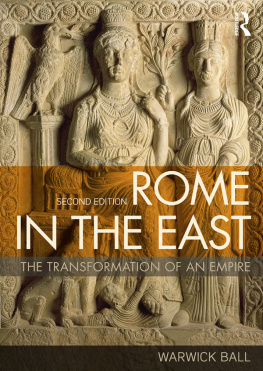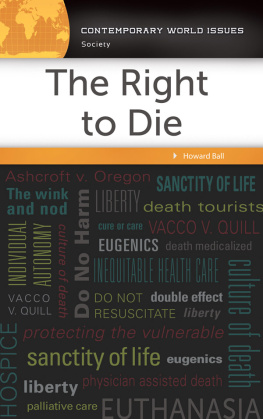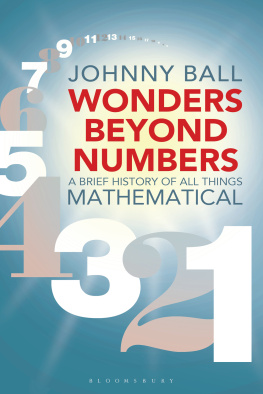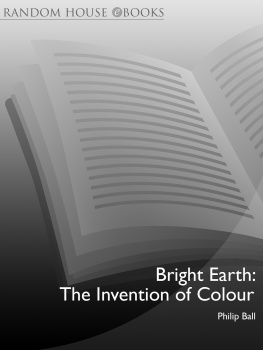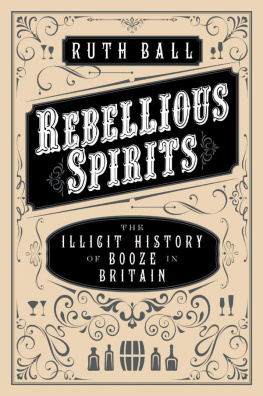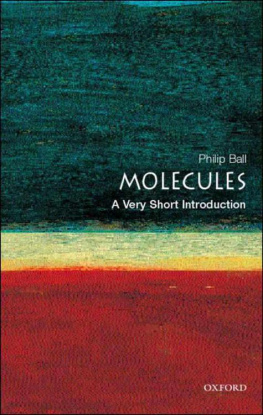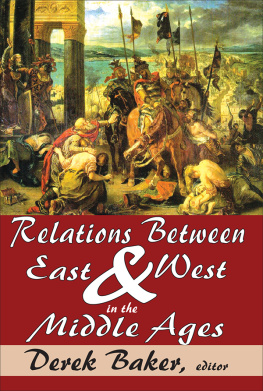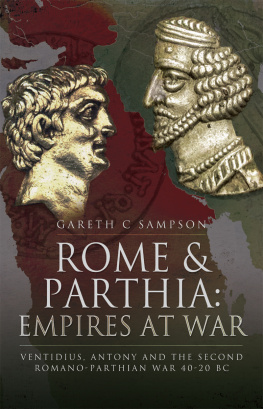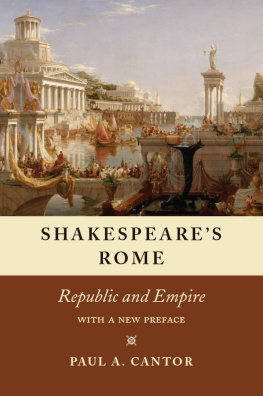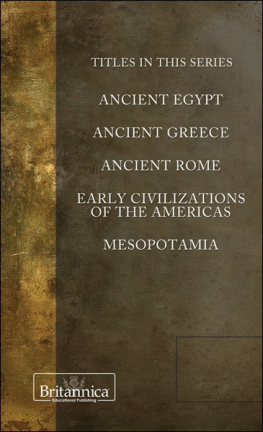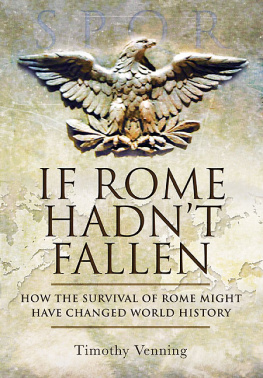Ball - Rome in the East: the transformation of an empire
Here you can read online Ball - Rome in the East: the transformation of an empire full text of the book (entire story) in english for free. Download pdf and epub, get meaning, cover and reviews about this ebook. City: London;New York;Rome, year: 2016, publisher: Routledge, Taylor & Francis Group, genre: Religion. Description of the work, (preface) as well as reviews are available. Best literature library LitArk.com created for fans of good reading and offers a wide selection of genres:
Romance novel
Science fiction
Adventure
Detective
Science
History
Home and family
Prose
Art
Politics
Computer
Non-fiction
Religion
Business
Children
Humor
Choose a favorite category and find really read worthwhile books. Enjoy immersion in the world of imagination, feel the emotions of the characters or learn something new for yourself, make an fascinating discovery.
Rome in the East: the transformation of an empire: summary, description and annotation
We offer to read an annotation, description, summary or preface (depends on what the author of the book "Rome in the East: the transformation of an empire" wrote himself). If you haven't found the necessary information about the book — write in the comments, we will try to find it.
Ball: author's other books
Who wrote Rome in the East: the transformation of an empire? Find out the surname, the name of the author of the book and a list of all author's works by series.
Rome in the East: the transformation of an empire — read online for free the complete book (whole text) full work
Below is the text of the book, divided by pages. System saving the place of the last page read, allows you to conveniently read the book "Rome in the East: the transformation of an empire" online for free, without having to search again every time where you left off. Put a bookmark, and you can go to the page where you finished reading at any time.
Font size:
Interval:
Bookmark:

Rome in the East
The Transformation of an Empire
Second edition
This new edition of Rome in the East expands on the seminal work of the first edition, and examines the lasting impact of the Near Eastern influence on Rome on our understanding of the development of European culture. Warwick Ball explores modern issues as well as ancient, and overturns conventional ideas about the spread of European culture to the East. This volume includes analysis of Roman archaeological and architectural remains in the East, as well as links to the Roman Empire as far afield as Iran, Central Asia, India, and China. The Near Eastern client kingdoms under Roman rule are examined in turn and each are shown to have affected Roman, and ultimately European, history in different but very fundamental ways. The highly visible presence of Rome in the East mainly the architectural remains, some among the greatest monumental buildings in the Roman world are examined from a Near Eastern perspective and demonstrated to be as much, if not more, a product of the Near East than of Rome.
Warwick Ball presents the story of Rome in the light of Romes fascination with the Near East, generating new insights into the nature and character of Roman civilisation, and European identity from Rome to the present. Near Eastern influence can be seen to have transformed Roman Europe, with perhaps the most significant change being the spread of Christianity. This new edition is updated with the latest research and findings from a range of sources including field work in the region and new studies and views that have emerged since the first edition. Over 200 images, most of them photographs taken by the author, demonstrate the grandeur of Rome in the East. This volume is an invaluable resource for students of the history of Rome and Europe, as well as those studying the Ancient Near East.
Warwick Ball is a Near Eastern archaeologist who has excavated in Afghanistan, Iran, Iraq, Jordan, Libya and Ethiopia, and travelled extensively in most other countries in the region in his professional capacity. He has held posts with the British Institute of Afghan Studies in Kabul, the Department of Antiquities of Jordan and the British School of Archaeology in Iraq. The first edition of Rome in the East was Choice Outstanding Academic Book in 2000 and was awarded the James Henry Breasted Prize in 2001. Author of many other books on the history and archaeology of the region, Mr Ball now lives in Scotland.
Rome in the East
The Transformation of an Empire
Second edition
Warwick Ball

First published 2016
by Routledge
2 Park Square, Milton Park, Abingdon, Oxon OX14 4RN
and by Routledge
711 Third Avenue, New York, NY 10017
Routledge is an imprint of the Taylor & Francis Group, an informa business
2016 Warwick Ball
The right of Warwick Ball to be identified as author of this work has been asserted by him in accordance with sections 77 and 78 of the Copyright, Designs and Patents Act 1988.
All rights reserved. No part of this book may be reprinted or reproduced or utilised in any form or by any electronic, mechanical, or other means, now known or hereafter invented, including photocopying and recording, or in any information storage or retrieval system, without permission in writing from the publishers.
Trademark notice: Product or corporate names may be trademarks or registered trademarks, and are used only for identification and explanation without intent to infringe.
1st edition published by Routledge in 1999
British Library Cataloguing-in-Publication Data
A catalogue record for this book is available from the British Library
Library of Congress Cataloging-in-Publication Data
Names: Ball, Warwick, author.
Title: Rome in the East : the transformation of an empire / Warwick Ball.
Description: 2nd edition. | Abingdon, Oxon : Routledge, [2016] | Includes bibliographical references and index.
Identifiers: LCCN 2015041864| ISBN 9780415720786 (hardback : alkaline paper) | ISBN 9780415717779 (paperback : alkaline paper) | ISBN 9781315646886 (e-book)
Subjects: LCSH: RomeCivilizationMiddle Eastern influences. | RomeCivilizationChristian influences.
Classification: LCC DG77.B317 2016 | DDC 937dc23
LC record available at http://lccn.loc.gov/2015041864
ISBN: 978-0-415-72078-6 (hbk)
ISBN: 978-0-415-71777-9 (pbk)
ISBN: 978-1-315-64688-6 (ebk)
Typeset in Times New Roman
by Swales & Willis Ltd, Exeter, Devon, UK
In memory of Palmyra
A city twice sacked
All photographs are by the author except the following:
3.11 and 3.15. Agence Photographique de la Runion des Muses Nationaux, Paris.
3.16, 3.17 and 3.18. British Museum.
8.3. Antikensammlung, Staatliche Museen zu Berlin Preussischer Kulturbesitz.
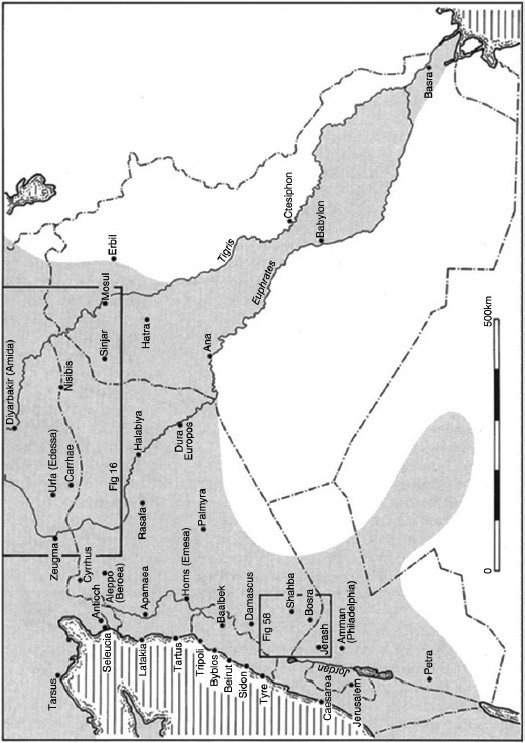
General map to illustrate Rome in the East. Shaded area shows approximate limits of the Empire at its greatest extent
Coming to Roman studies as an outsider (I am a Near Eastern archaeologist, one whose experience furthermore has been mainly in areas east of the Roman frontiers), Classical Studies appears an awesome beast. Poland and Ireland style their religion Roman, and most European capitals are adorned with triumphal arches, commemorative columns, colonnaded faades and other trappings of Imperial Rome. When Europeans spread beyond their borders, the forms of Greece and Rome were taken with them: both New Delhi and Washington, for example, the one a former imperial capital the other a current one, are expressed in Neo-Classical terms. Neo-Classical buildings are still being built, and science-fiction films portray inter-galactic capitals in a style instantly identifiable with ancient Rome. Is it really possible for anyone from this background anyone forming a part of broader European culture, in other words to be entirely objective about Greece and Rome? Perhaps only, say, a Chinese, Ugandan or Arab author can write truly objectively about the Romans (one would at the very least be curious of their viewpoint). But there again, the Chinese erect Neo-Classical public buildings in their new futuristic boom cities and the Ugandans practice Roman law and Arabs lay under the Roman Empire longer than most of western Europe.
This makes the present subject: Rome in a non-European environment, specifically, the area of the Near East that was a part of the Roman Empire, all the more pertinent. It also makes the subject even more culturally loaded: any discussion of Rome in the East must not only address Rome from the perspective of the two thousand years of cultural baggage that a European author of necessity brings with it, but also the even larger cultural baggage of the Near Eastern environment where Rome found itself a newcomer. For we are faced with the conundrum that Rome ruled in the Near East longer than in most parts of western Europe, yet today Roman influence is more evident in, say, Australia than it is in, say, Jordan. This means that the history, epigraphy and material remains of the region come under minute scrutiny for evidence of Roman versus indigenous character.
Any book about Rome in the East, therefore, is ultimately as much concerned with modern issues as ancient, even when not consciously intended: the whole history, nature and morality of western involvement in the Middle East is one of the more important issues at stake in world politics as I write. In the words of Fernand Braudel, To the historian, understanding the past and understanding the present are the same thing. A passion for history can hardly be expected to stop short at a respectful distance from the present day.
Next pageFont size:
Interval:
Bookmark:
Similar books «Rome in the East: the transformation of an empire»
Look at similar books to Rome in the East: the transformation of an empire. We have selected literature similar in name and meaning in the hope of providing readers with more options to find new, interesting, not yet read works.
Discussion, reviews of the book Rome in the East: the transformation of an empire and just readers' own opinions. Leave your comments, write what you think about the work, its meaning or the main characters. Specify what exactly you liked and what you didn't like, and why you think so.

